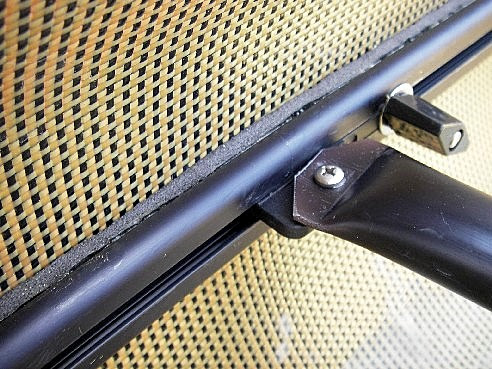I have a specific question that Mike Mc Crea can probably answer but in the more general context I would like to start one thread where the adhesive experts ( I am not) can tell us what adhesives they use for what from glueing patches to gunwales.
Specific question: What adhesive would be best to glue the portage pads in my Mad River Monarch back firmly to their hard plastic subform? After some four thousand miles of being exposed to the wind one half is pretty loose.
Gorilla? Something else?
I would hesitate to claim the mantle of adhesives expert. Adhesives experimenter perhaps.
The yoke pads on my Monarch are some kind of foam coated in black vinyl, adhered to an aluminum yoke. My preferred choices of adhesives there would be either contact cement or epoxy resin.
The upside of contact cement (DAP Weldwood, red can) would be that once you pressed the foam into place it would be immovable stuck in position and you wouldn’t have to clamp it, weight it down or hold it in place until the adhesive set. The downside to contact cement is that if you got the alignment wrong you would be SOL, ‘cause you can’t move contact cemented foam once it touches a glued-to surface.
The upside of epoxy (or other glues that don’t instantly stick) is that you would have time to adjust the pad position is you missed the alignment, and the downside is that you would need to keep the foam held in position until it was adhered.
Other adhesives and uses – Hmmm, well, I am fond of G/flex because it sticks to dang near everything and can be made in teeny batches (the 50/50 mixing ratio is easy to eyeball).
For vinyl pad D-rings on Royalex hulls (or other vinyl-to-vinyl applications) I like Vynabond, although I am extremely careful in application, making sure it has dried enough that it doesn’t eat the foam core of the hull.
http://www.clavey.com/wp-content/uploads/2012/02/VinInst.pdf
Other adhesives – I am sold on the effectiveness of running a bead of Plumber’s Goop around the edges of minicel (and D-rings, and etc) to help prevent infiltration of water and grit loosening the contact cement/Vynabond underneath.
http://www.homedepot.com/p/Amazing-Goop-3-7-fl-oz-Plumbing-Adhesive-150011/100372167
For small repairs that need to remain both waterproof and pliable (waders, wetsuits, Mukluk seams, etc) I use Aquaseal (or, actually Aquaseal/Cotol mixed 3/1).
https://www.mcnett.com/gearaid/aquaseal#10110
Epoxy putty – In applications where I need to fill some void or do not need flexibility I turn to either PC-7 or J-B Weld. They seem very similar in effectiveness. PC-7 mixes to the consistency of thick peanut butter, J-B Weld is more akin to toothpaste (and cures faster than PC-7)
http://www.pcepoxy.com/our-products/paste-epoxies/pc-7.php
http://www.jbweld.com/
Lastly, tapes. Nashua 357 is still the gold standard for duct tape
http://www.uline.com/BL_6123/Nashua...gclid=CNODlMrx0cACFSbl7AodiyIAYA&gclsrc=aw.ds
At $26 a roll it should be. Gorilla Tape is a close second, and it is available everywhere.
For permanent gear repair tape I use Tenacious Tape, which now comes in colors.
http://www.rei.com/product/783045/gear-aid-tenacious-tape-repair-tape
I do use other adhesives for non-boating, non-gear purposes, including Titebond for nuts when I don’t have nylocks, superglue for small non-critical repairs, wood glue, Gorilla Glue, Super 77 spray….
You asked, and I haven’t even looked in the glues and adhesives box yet.
What was Forrest Gump’s line “That’s all I have to say about that”

